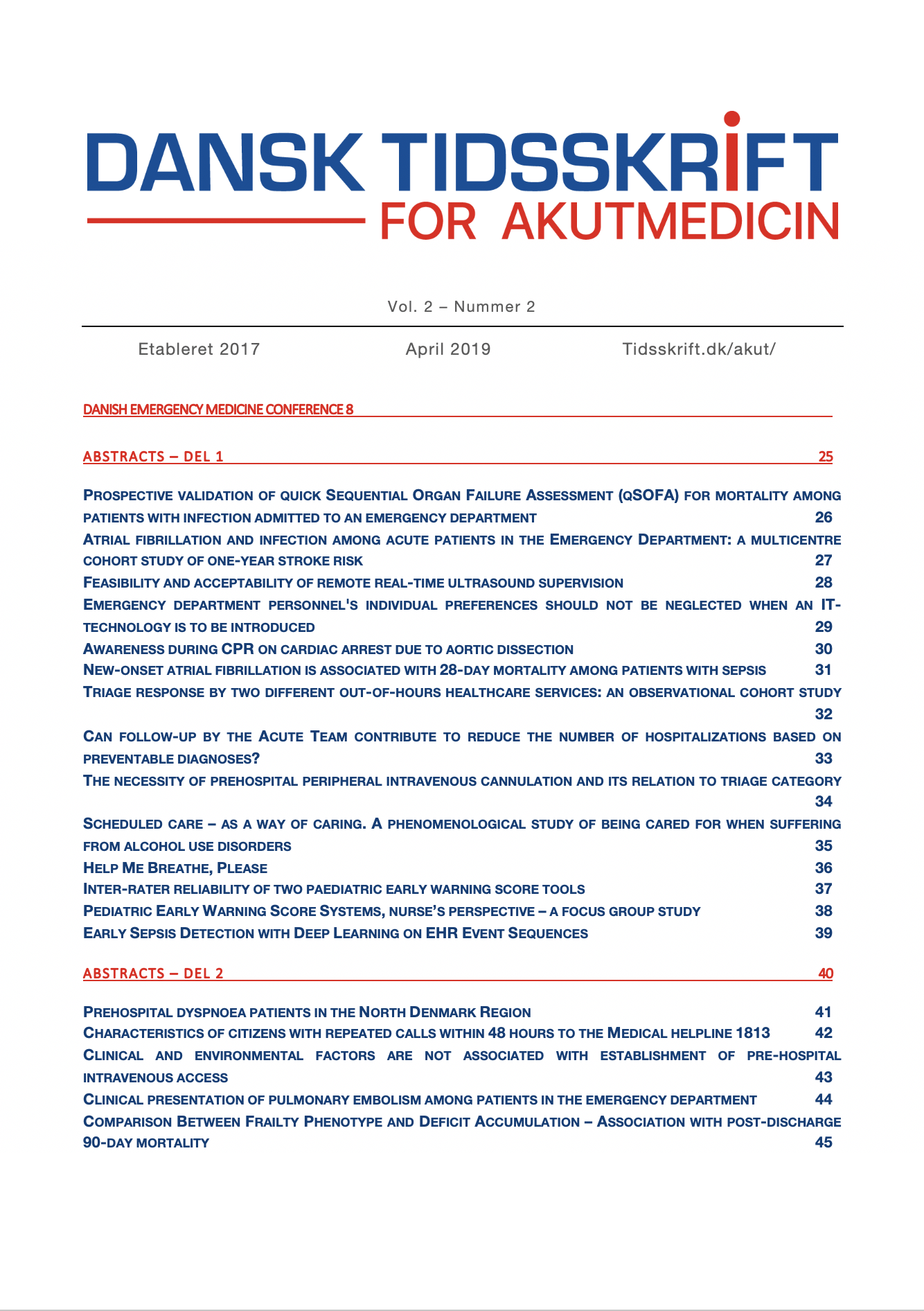Resumé
Early identification of patients with serious infections is a clinical challenge for both medical helplines and emergency departments (ED). Serious infections might be difficult to identify as some patients present unspecific symptoms and a normal body temperature. It is therefore important to describe characteristics and help-seeking behaviour (HSB) with the aim to identify infections earlier.
The study population was part of a data collection carried out between 24.01-09.02 2017, at the Emergency Medical Services Copenhagen (Medical Helpline 1813). Among 11,340 patients in contact with the Medical Helpline, we identified adult patients seen in the EDs with a diagnosis of infection (ICD-10 classification). Quantitative and qualitative (recorded voicelogs) data were extracted and a mixed methods study (convergent design) was performed. Descriptive statistics and logistic regression was used for the quantitative data strand. Thematic analysis was used for the qualitative data strand. Both data strands were integrated to describe the characteristics of the HSB of patients with infections.
In total 3,614 adult patients were triaged to an ED, and 753 (20.8%) were diagnosed with infection of which 83 (11%) were hospitalized. ED patients with infection were younger (Median: 42 vs 47 years, p=<0.001), more often without comorbidity (68.5% vs 74.5%, p=0.006) and more often females (64.1% vs 53.2%, p=<0.001) compared to ED patients without infection. Hospitalized patients with infection were older (71 vs 40 years, p=<0.001), and had more comorbidity (60.2% vs 39.8%, p=<0.001) than those with infection who were not hospitalized. Fever was presented by 18 out of 32 hospitalized patients (56.3%) in the voicelogs. Some described that fever appeared with breathing difficulties, cough, and general weakness. Several patients had tried to self-manage their infection, but most calls (71.2%) were made by a close relative who was concerned. This illustrates that patients did not seek health professional help before their relatives were sufficiently concerned.
Hospitalized patients with infections were older and had more comorbidity compared to the non-hospitalized patients with infections. Among hospitalized patients with infections, fever was frequently presented in 1813-calls. Characteristic like self-management and concerned relatives are important to understand the HSB of hospitalized patients with infections.
Licenseret under en Creative Commons Kreditering 4.0 International-licens (CC BY 4.0).
© Forfatterne.

